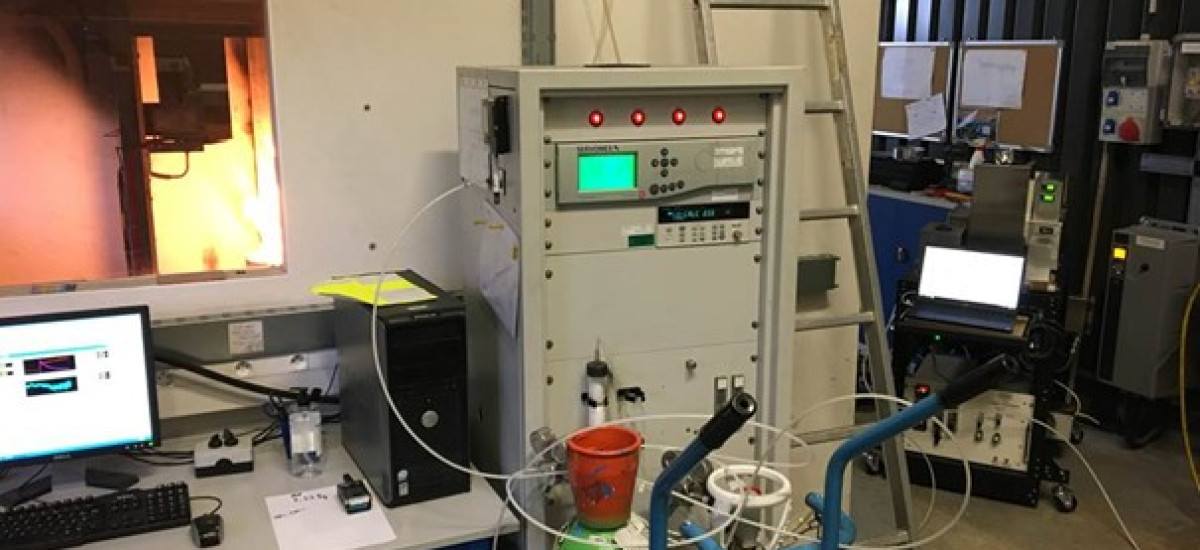20/4/2021
With the acquisition of two new FTIR systems, one in France and one in UK, Efectis is now able to provide a wide range of gas analyses associated with fire tests.
Using Fourier Transform Infrared Spectroscopy, fire effluent is filtered and then continuously irradiated by two beams of IR light which pass through the sample via different paths. When the beams subsequently combine, the resulting ‘interferogram’ can be resolved mathematically (Fourier Transform) to determine the infrared absorption as a function of frequency and can be used to identify and quantify different species. The value of FTIR over classical infrared spectroscopy is that samples can be analysed for many components in one sample and a complete spectrum can be obtained over a relatively short time period (a few seconds). Software can identify and quantify many infrared active species from a single sample scan. These result in the possibility of quasi-continuous concentration/time plots when the FTIR is connected directly to the sampling line. Sensitivity is dependent on the optical path length through the analysed gas that passes through the gas cell, and on the type of detector.
Fire effluent gas and vapour analysis using FTIR is now routinely used in the field of fire safety, often following the original guidance from a European Union funded research programme ‘Smoke Analysis by FTIR spectrometry’ (SAFIR) and then using ISO 19702 standard.
Gases commonly analysed with this method include CO, CO2, hydrogen halides (HCl, HBr, HF), sulphur-containing species (H2S, SO2), nitric oxides (NO, NO2, N2O) and aldehydes. Other species such as light hydrocarbons are also easily measured (CH4, C2H2, C2H4 for example). These analyses can be completed with semi-quantitative or qualitative analysis of a wide range of gases on demand. The FTIR technique is capable of measuring concentrations below 10 ppm and allows dynamic on-line measurement of these concentrations, typically every five seconds.
In summary, this technique involves sampling gas through a single measurement cell and recording the spectral response. The absorbing frequencies and the intensity of absorption at those frequencies allow identification and quantification (through suitable calibration) respectively.
Applications are wider nowadays:
- Tests according to various regulations in the field of transportation, such as smoke and toxicity tests of FTP code part 2 for marine applications or EN 45545-2 for railways
- Analysis of substances, in combination with calorimetry in configurations such as cone calorimeter ISO 5660-1 + FTIR
- Analysis of gases in large-scale calorimetry according to ISO 16405. This can be done for single objects such as sofas, for room corner test configurations (e.g. ISO 9705) or any other full-scale configuration such as storage cabinets.
- Analysis of gases released on an unexposed face during fire resistance tests, in example for penetrations, ducts or doors. For this last point, hoods in our laboratories have been equipped to accommodate this additional measurement.
These data are particularly valuable for use in mathematical models that calculate toxicity of fire effluents as a function of time, or simply to understand more fire chemistry.
Contact: Eric Guillaume – eric.guillaume@efectis.com

